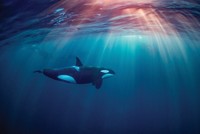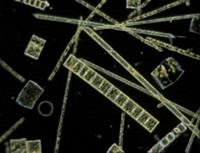Advertisement
Grab your lab coat. Let's get started
Welcome!
Welcome!
Create an account below to get 6 C&EN articles per month, receive newsletters and more - all free.
It seems this is your first time logging in online. Please enter the following information to continue.
As an ACS member you automatically get access to this site. All we need is few more details to create your reading experience.
Not you? Sign in with a different account.
Not you? Sign in with a different account.
ERROR 1
ERROR 1
ERROR 2
ERROR 2
ERROR 2
ERROR 2
ERROR 2
Password and Confirm password must match.
If you have an ACS member number, please enter it here so we can link this account to your membership. (optional)
ERROR 2
ACS values your privacy. By submitting your information, you are gaining access to C&EN and subscribing to our weekly newsletter. We use the information you provide to make your reading experience better, and we will never sell your data to third party members.
Environment
First Pan-Arctic Survey Reveals Low Levels Of PCBs
Persistent Pollution: Though low in concentration, the toxic compounds appear across the entire Arctic basin
by Naomi Lubick
January 14, 2011

The first Arctic Ocean-wide survey of polychlorinated biphenyls (PCBs) in seawater shows low levels throughout Arctic surface waters, amounting to a tiny fraction of the PCBs emitted historically worldwide (Environ. Sci. Technol., DOI: 10.1021/es103542f). The new study also found that different forms of the pollutant cluster in different parts of the Arctic, leaving open the question of the chemicals' geographic origins.
The compounds have accumulated over the years in Arctic waters and ice, from faraway manufacturing sources in North America, Europe, China, and other regions. Researchers worry about PCBs in the environment because they cause endocrine disruption and neurotoxicity. The first bans on the chemicals took effect in the 1970s. Use has been waning ever since but PCBs remain in circulation. What's more, different forms (or congeners) behave differently in the environment.
To provide a picture of the concentrations and locations of the various forms, Swedish researchers performed shipboard sampling during three tours in Arctic waters in 2001, 2005, and 2008. Using advanced techniques including collection with polyurethane foam adsorbents and gas chromatography paired with high-resolution mass spectrometry, Daniel Carrizo and Örjan Gustafsson of Stockholm University analyzed 13 of the more abundant congeners of PCBs in ice and in surface waters extending to 30 m in depth. They found that the concentrations of congeners of PCBs ranged from 0.13 to 21 pg/L. A recent north-to-south cruise in the Atlantic Ocean found similar but lower PCB concentrations, ranging from 0.071 to 1.7pg/L in surface waters (Environ. Sci. Technol., DOI: 10.1021/es071432d).
Carrizo and Gustafsson found that higher concentrations clustered in the shallower shelf waters that ring the Arctic Ocean, with lower concentrations in the ocean's central basin, farther from land. Overall, they estimate less than half a ton of PCBs currently resides in the Arctic, just 0.0008% of all the PCBs emitted historically. Different congeners also clustered in different parts of the Arctic Ocean, hinting that some traveled there by air and some by water.
The new work may be the most complete survey of these persistent chemicals for a whole ocean, comments Rainer Lohmann of the University of Rhode Island, Narragansett Bay. The work also represents "an extremely challenging analysis," he says, as PCBs have proven difficult to trap and measure in the environment without contamination or other confounding factors.
The Arctic total, he says, is "surprisingly low for a place we think of as highly polluted" by persistent chemicals. Lohmann says the distribution of congeners is also surprising and warrants further examination to determine how some PCBs arrived in the Arctic.
Gustafsson and his team have unpublished data on the Arctic's deeper waters. But it does not change the surface-water survey's conclusion that Arctic animals are exposed to very little environmental PCBs in these shallower waters.





Join the conversation
Contact the reporter
Submit a Letter to the Editor for publication
Engage with us on Twitter